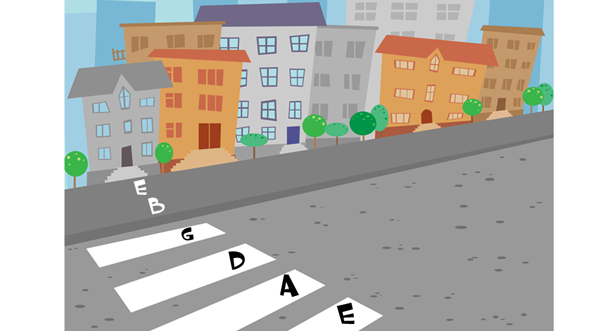Stepping Squares
Moving between squares is easy because squares overlap each other's orange corner notes. Can you see why I call them "stepping squares"?
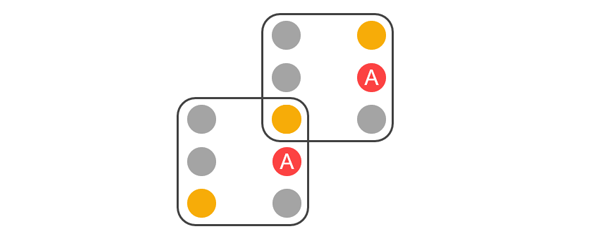
Notice a feature of the orange notes: They always have a narrow interval (2 frets) on either side of them.

Those intervals are part of additional stepping squares.
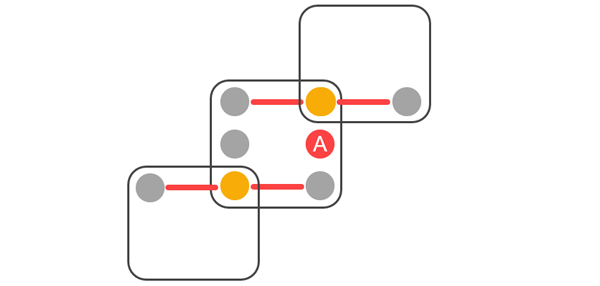
Here's an example that starts on the 5th fret of the low E string. Ignore the high B and E strings for now. Try playing this sequence in both directions.
(Notation: E5, A3-5-7, D5-7, G5-7-9) (Reverse: G9-7-5, D7-5, A7-5-3, E5)

You're always moving to the opposite row in the next square: 3 to 1 or 1 to 3.
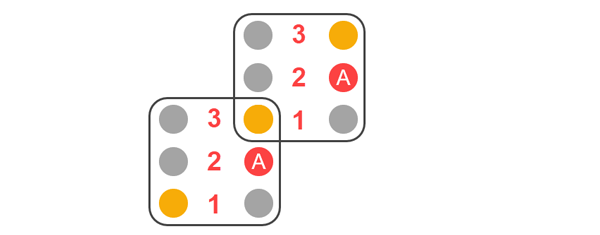
Playing with a Pick
Starting out, it's easier to strum with your thumb. You can feel the thickness of the strings, and your brain knows where the end of your thumb is. It doesn't know where the end of your pick is. If that's a problem, try moving your picking hand up the neck of the guitar until it's about five frets below your other hand. Your peripheral vision will tell you which string you're on.
B String Shift
When a square crosses over the B string, the rows on the B and E strings shift up one fret. If the first row lands on the B string, then the entire square shifts up one fret.

Here's the previous sequence extended to the B and E strings. Notice how rows two and three of the square shift up one fret, when they land on the B and E strings. That's the B string shift.
(Notation: E5, A3-5-7, D5-7, G5-7-9, B string shift, B8-10, E8-10-12)
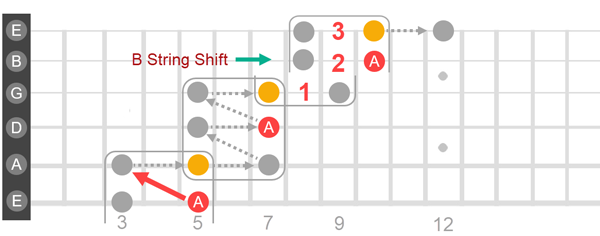
Next, play the stepping squares in reverse. Notice that you have to shift back one fret when you leave the B string. You're starting on the 12th fret of the high E string.
(Notation: E12-10-8, B10-8, B string shift, G9-7-5, D7-5, A7-5-3, E5)

In a D minor stepping square seqeunce the 3rd row lands on the B string. That row shifts up one fret, causing everything else on the B and E strings to move along with it.
(Notation: E5, A3-5-7, G5-7, B string shift, B6-8-10, E8-10)
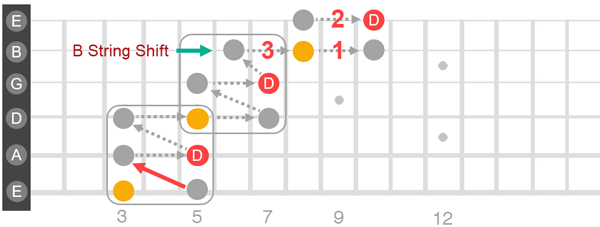
Think of the B string shift like a curb on a street. You have to step up a half step to reach the sidewalk and step down a half step to reach the street. Once you're on the sidewalk or in the street, everything is level and you can move about as normal.
